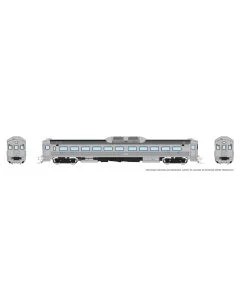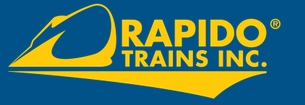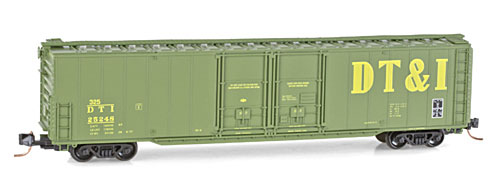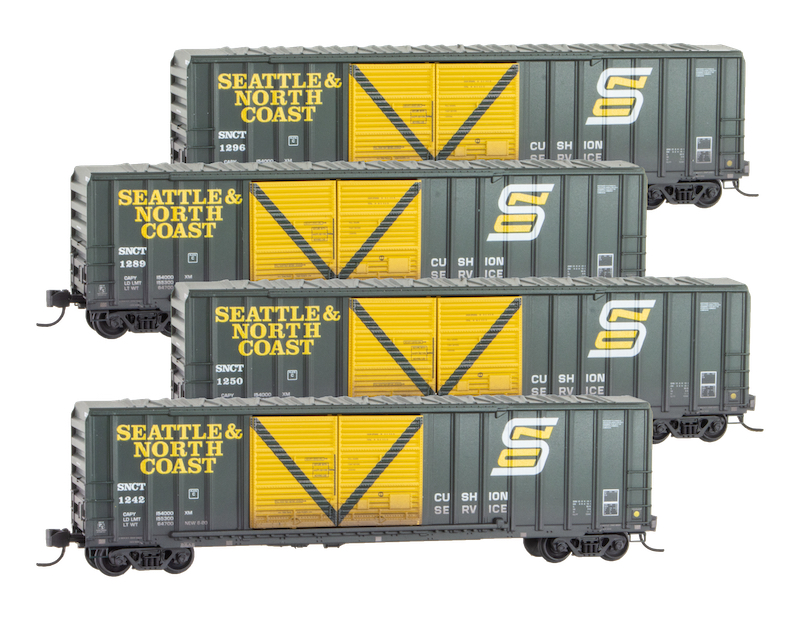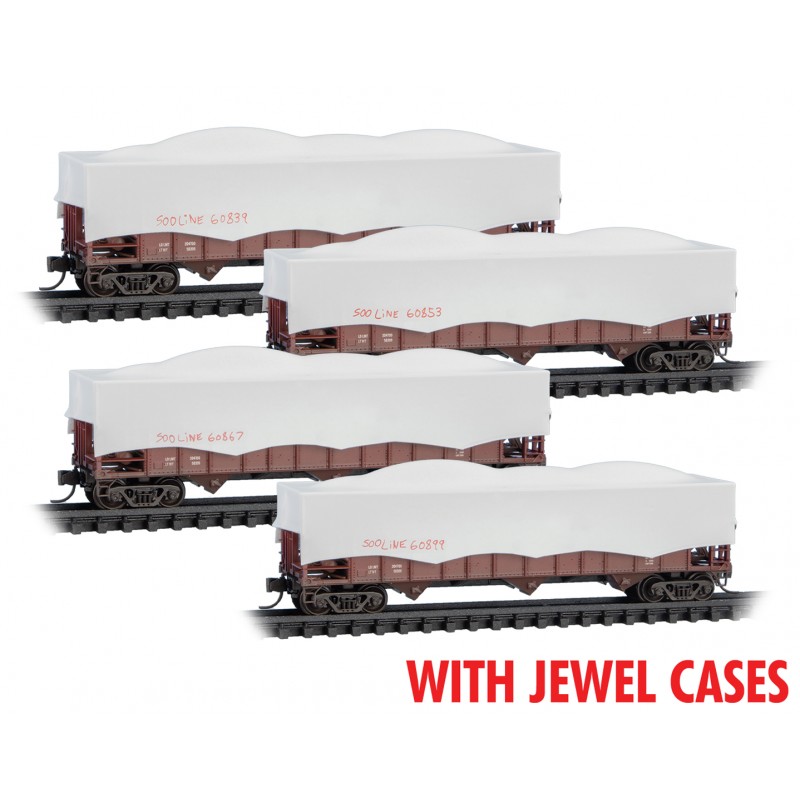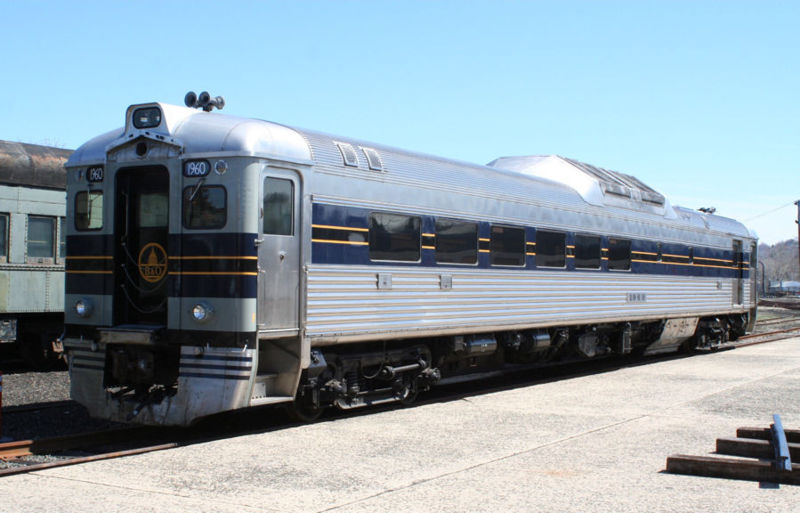Specific Item Information: N Budd RDC-1 (Ph 1) (DC/Silent)
Model Information: Built by the Budd Company of Philadelphia in their hundreds between the late 1940s and early 1960s, the single-car RDC (Rail Diesel Car) fleet was ubiquitous on passenger service throughout Canada and the United States on any routes that could not justify loco-hauled operation. The 85ft long vehicles, which were powered by a pair of Detroit Diesel Series 110 engines, could be employed in single formation or coupled together with other examples - all controlled from the lead RDC cab.
DCC Information:
The Rapido N scale Budd RDC features:
The Rapido N scale Budd RDC features:
- Designed from original blueprints and field measurements
- Accurate Phase 1 and Phase 2 body details
- Both fabricated and cast trucks, as appropriate
- Single-motor, all-wheel drive for unparalleled reliability
- All-wheel electrical pickup
- Directional headlights and red marker lights
- Flicker-free interior lighting
- Tinted windows and fully detailed interiors
- DC/Silent (DCC Ready) or DC/DCC/Sound (ESU LokSound)
- Factory-installed couplers mounted at the correct height
Prototype History: This Single-car DMU is commonly known as the "RDC," the motorized Rail Diesel Car generally operated in rural areas where ridership and mail/parcel transport were too low for regular passenger train service. When first introduced, the RDC was also proclaimed to be the savior of branch line and suburban service. It was heavily used as a commuter service workhorse (and still is currently in some locations!).
The Budd Company rolled out the first RDC in the fall of 1949, a single RDC-1 "Budd Demonstrator." Hundreds more would eventually follow for service to railroads throughout North America and around the world (including South America, Australia, Saudi Arabia and even Cuba!). Oddly enough, it was Budd's experience in the production of small yet powerful diesel engines for WWII tanks that eventually lead to the birth of the RDC.
A total of 398 units were built. The RDC utilized two compact motors mounted under the car's floor to drive one axle on each truck. Capable of being operated by a motorman from either end of the car, these units could be used independently or combined to create a two- or three-unit consist. These railcars cold achieve as top speed of 85mph
A review of the Budd roster reveals that many RDC cars were operated well into the 1970's and early 1980's, with a small number still in service today!
Four standardized designs were created to reduce the time and expense of custom production
- RDC-1 was strictly passenger-oriented, containing 90 coach seats.
- RDC-2 contained 71 seats and a separate baggage area.
- RDC-3 combined a Railway Post Office with a baggage compartment and 49 seats.
- RDC-4 was a self-contained RPO-Express car.
Read more on Wikipedia.
The Budd Company rolled out the first RDC in the fall of 1949, a single RDC-1 "Budd Demonstrator." Hundreds more would eventually follow for service to railroads throughout North America and around the world (including South America, Australia, Saudi Arabia and even Cuba!). Oddly enough, it was Budd's experience in the production of small yet powerful diesel engines for WWII tanks that eventually lead to the birth of the RDC.
A total of 398 units were built. The RDC utilized two compact motors mounted under the car's floor to drive one axle on each truck. Capable of being operated by a motorman from either end of the car, these units could be used independently or combined to create a two- or three-unit consist. These railcars cold achieve as top speed of 85mph
A review of the Budd roster reveals that many RDC cars were operated well into the 1970's and early 1980's, with a small number still in service today!
Four standardized designs were created to reduce the time and expense of custom production
- RDC-1 was strictly passenger-oriented, containing 90 coach seats.
- RDC-2 contained 71 seats and a separate baggage area.
- RDC-3 combined a Railway Post Office with a baggage compartment and 49 seats.
- RDC-4 was a self-contained RPO-Express car.
Read more on Wikipedia.
Road Name History:  Although they may be molded in color, unpainted and unlettered, undecorated products are marketed to modelers who seek to custom decorate their models for private roads and/or road and/or company names that were not commercially produced by any of the major manufacturers.
Although they may be molded in color, unpainted and unlettered, undecorated products are marketed to modelers who seek to custom decorate their models for private roads and/or road and/or company names that were not commercially produced by any of the major manufacturers.
Undecorated models are frequently also unassembled or only partially assembled and required modelers to be comfortable with glue, paint and sometimes solder in order to prepare their models for display. Materials for these models can vary but often include plastic, pewter and resin. Models may or may not come with decals or other decorations such as plastic signage, railings and ladders to enhance the appearance of the final product.

Undecorated models are frequently also unassembled or only partially assembled and required modelers to be comfortable with glue, paint and sometimes solder in order to prepare their models for display. Materials for these models can vary but often include plastic, pewter and resin. Models may or may not come with decals or other decorations such as plastic signage, railings and ladders to enhance the appearance of the final product.
Brand/Importer Information: Rapido Trains Inc. is a high-end manufacturer of model trains and accessories in HO, OO and N (North American 1:160 and British 1:148) scales. The firm's mission is to recreate the entire rail travel experience, from fully-detailed interiors and under-frames on models to fully-wired telephone poles for model railroads.
The name RAPIDO was introduced by Canadian National in 1965 to headline the railway's high-speed intercity passenger services. Until the mid-1980s, RAPIDO stood for fast schedules, frequent trains, and superb service.
Today, Rapido Trains continues the RAPIDO concept with state-of-the-art models and attention to fine detail. This company is not related to the venerable (and now defunct) German manufacturer Arnold Rapido, nor the present-day Arnold (which is owned by the United Kingdom's Hornby), Canadian based Rapido Trains was founded in 2003.
The name RAPIDO was introduced by Canadian National in 1965 to headline the railway's high-speed intercity passenger services. Until the mid-1980s, RAPIDO stood for fast schedules, frequent trains, and superb service.
Today, Rapido Trains continues the RAPIDO concept with state-of-the-art models and attention to fine detail. This company is not related to the venerable (and now defunct) German manufacturer Arnold Rapido, nor the present-day Arnold (which is owned by the United Kingdom's Hornby), Canadian based Rapido Trains was founded in 2003.
Item created by: Powderman on 2024-01-10 14:44:13. Last edited by Powderman on 2024-01-10 14:44:14
If you see errors or missing data in this entry, please feel free to log in and edit it. Anyone with a Gmail account can log in instantly.
If you see errors or missing data in this entry, please feel free to log in and edit it. Anyone with a Gmail account can log in instantly.


